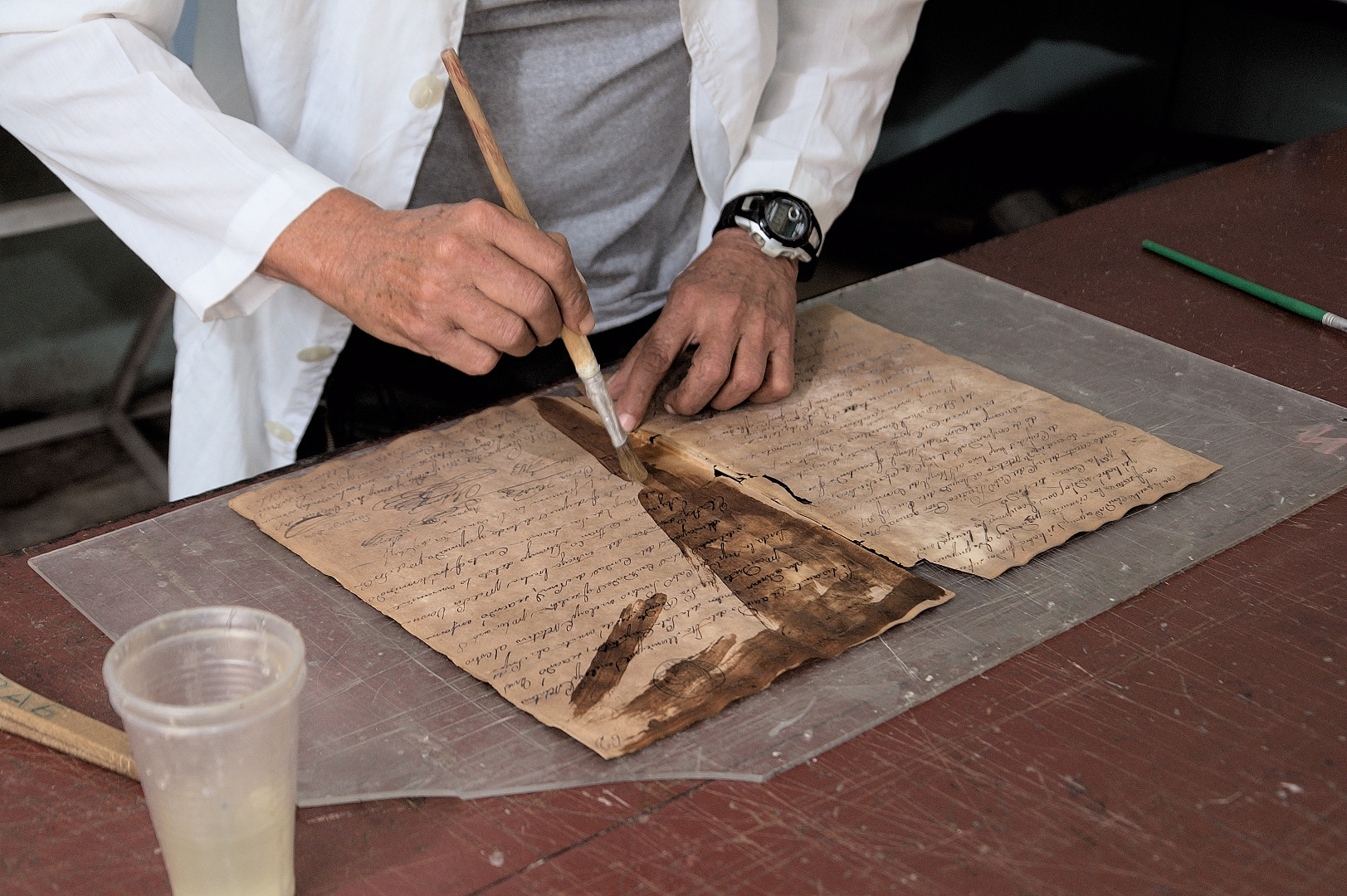CAMAGÜEY.-Pedro de Alcántara Téllez Girón y Pimentel was what is called a Spanish military and politician out of the ordinary for his time. Endowed with a rare culture, he conquered numerous distinctions, both in peace and in war. In 1840, he came to Cuba as governor and captain general, and although he held the position for just one year he knew how to take advantage of the time.
He had road works and public buildings built, made the sugar industry reach 20% of world production, published the first magazine of Medical Sciences in the country and contributed to the installation of the first photographic studio. However, his most valuable contribution to the Culture and History of our country was the creation of the National Archive on January 28, 1840. This institution opened the doors, 60 years later, to the National Archive of the Republic of Cuba .
Since their origins, the archives have had the mission of hoarding, preserving, managing, cataloging, guarding and making the documentation in their custody available for public consultation. The first historical antecedents to establish provincial archives in Cuba date back to 1904, when in a letter dated May 6 of that year, the then Senator of the Republic, Salvador Cisneros Betancourt, from Camagüey, addressed a request to President Tomás Estrada Palma to create a General Archive in each province head in order to take care of State documents. With this idea, since the beginning of the 20th century, Camagüey made an effort to have a site capable of rescuing and maintaining historical memory.
With ups and downs, valuable documents were gathered in the Ignacio Agramonte Provincial Museum, and the primitive La Avellaneda library, which also began to venture into the world of preserving valuable papers. The triumph of the Revolution was necessary for the existence of the Historical Archive to emerge in the 1960s, materialized in 1975 thanks to the efforts of various local historians and some funds donated by legal and social institutions.
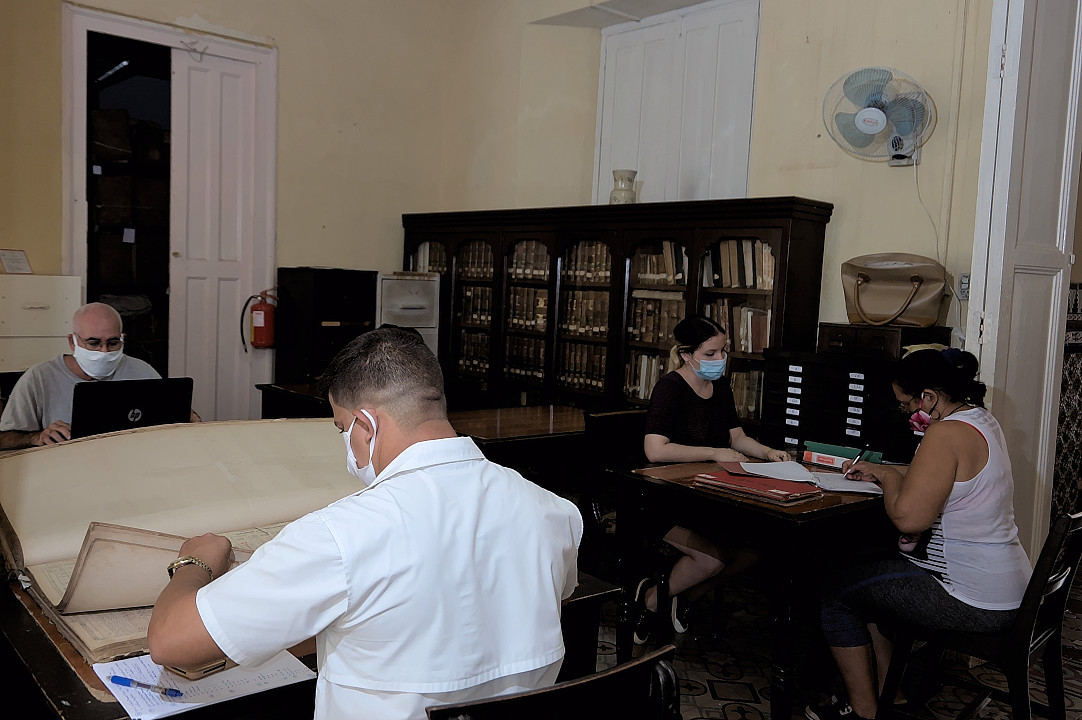
THE VALUE OF THE RARE
Currently, the Provincial Historical Archive of Camagüey, attached to the Ministry of Science, Technology and Environment, has different sections open to public consultation and others for administrative tasks, restoration and storage. It keeps a wide collection of writings of patrimonial value, works of historical connotation that make up the yesterday and today of Camagüey society, papers reluctant to disappear in the face of the implacable passage of the years and the difficult conditions in which they survive.
Most of the more than 6,000 documents deposited at the site comprise the active and passive bibliography of Prince's history known to date, including science and historical cartography.
The chapter on restoration in the Provincial Historical Archive of Camagüey needs to be considered. Today, not a few of these essential collections are limited to the consultation of researchers due to their advanced state of deterioration, which despite the technical attention and efforts made suffer from the storage conditions, so their protection and exhibition are found in danger.
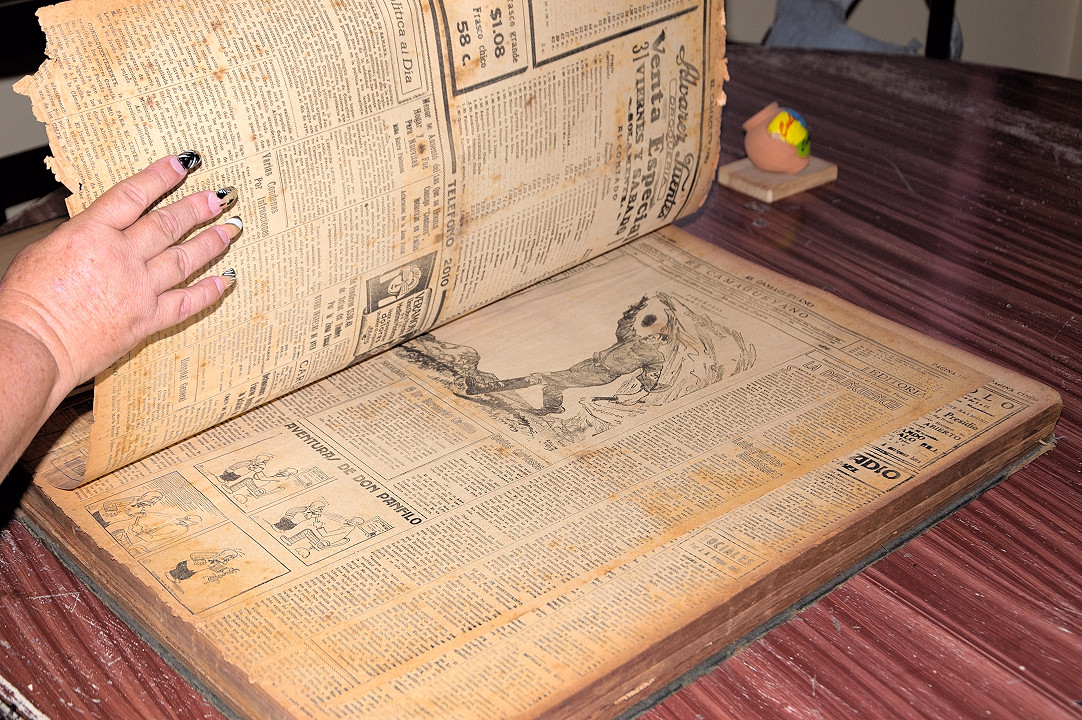
RESTORE YES, BUT HOW?
Not far from the Archive, in the Julio Antonio Mella Provincial Library, other no less important documents are also in danger of lost memories due to time, although not due to oblivion. This institution is a cornerstone in the mission of conservation, protection and dissemination of bibliographic heritage, as well as the promotion of reading through different actions and cultural activities.
Open the June 1st. 1963 in the building of the old Liceo Society of Port-au-Prince, the Provincial Library brings together departments such as Customer Service, General Rooms, Rare and Valuable Funds, Literature, Children, Youth, Visual Arts, Music and Library Extension. Today its bibliographic collection has more than 220,000 volumes approximately; it serves some 86,000 users a year and offers more than 145,000 services, including collections of the press from the 19th and 20th centuries.
Its value in the preservation of historical memory, especially through the Department of Rare and Valuable Funds, is highlighted by the specialist Yaray Salazar Martínez, a Library technician, who SAYS that among the documents gathered there are those of Major General Ignacio Agramonte Loynaz and the publications of the Office of the Historian of the City. She also pointed out that in this set is the important collection of the newspaper El Camagüeyano, in its editions from 1906 to 1959, which undoubtedly constitutes a daily chronicle of the province since the beginning of the 20th century.
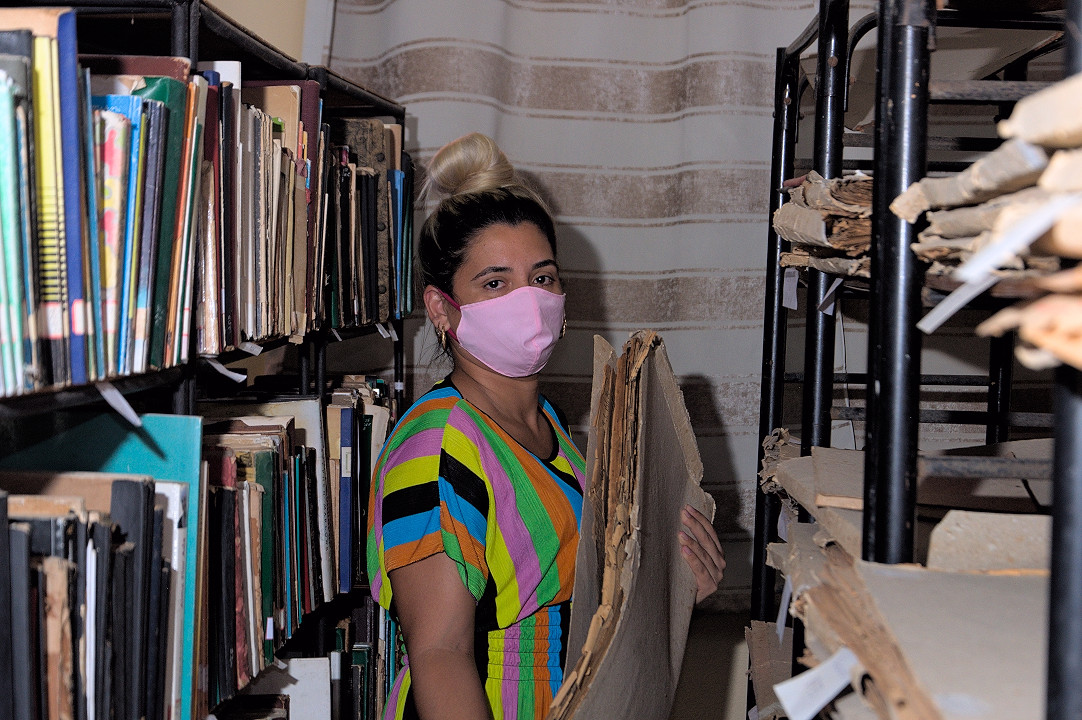
Adelina Vázquez Álvarez, a technician in Library Science, is also hurt by the state in which they receive the copies.
“Publisher publications are always new, but donations sometimes don't arrive in good condition. These materials are subjected to a restoration process with the resources we have. This has made it possible for a lot of documentation to remain open to the public, but this is not the case with all ”.
According to Aida María Cortina Calzado, another of the specialists, the collections constitute excellent material to obtain information: “Here we not only gather the history of Camagüey, we also protect and classify a great diversity of writings on different subjects, for example architecture, science and art , in this case painting and ballet ”.
In general, and although the main users of the Department of Rare and Valuable Funds are History researchers, the documents can be accessed by the population, especially students and writers with topics that require deep and specific data.
The age of a writing is not sufficient endorsement for it to be classified as valuable. The category requires that it have other issues, such as unique copies in existence, importance of content and user demand.
As a large part of the documentation is old and the conditions have rarely helped for its conservation, they are heading towards its partial or total deterioration.
"We are affected by the climate and the conditions of the room," explains Mayoli Ortiz Martín, curator of the library, overcrowding and heat constitute another problem, which causes the paper to toast; in addition, we have few shelves, most of them made of wood, attacked by insects. For this reason many publications are not provided and are even exempt from consultation because manipulation causes further deterioration ”.
Despite the difficulties, the workers look for alternatives to solve the problem. Now they choose to digitize the content to offer the information without having to manipulate the originals, but the system requires techniques and resources that are not available to the institution.
“In digitization we have advanced. We prioritize books related to Camagüey, Mayoli adds, but we do not have computers or the equipment necessary to scan large volumes; that is why it has not been possible to go to the rescue of the newspaper El Camagüeyano, for example ”.
The existence of the Rare and Valuable Funds Room constitutes a fundamental pillar for our historical memory. In it, it is deposited all the social and economic life of the province, daily events, protocol funds, courts, various institutions, companies, writers, politicians, patriots and publications in general.
We do not relate Don Pedro Alcántara Téllez for the sole fact of having founded the National Archive of Cuba 180 years ago, but for having taken into account from the beginning that the officials in charge of the institution and according to his instructions, collected rare documents and of value as real treasures of history. This is the first stone of the Provincial Historical Archive of Camagüey and of the Rare and Valuable Funds room of the Julio Antonio Mella Provincial Library.
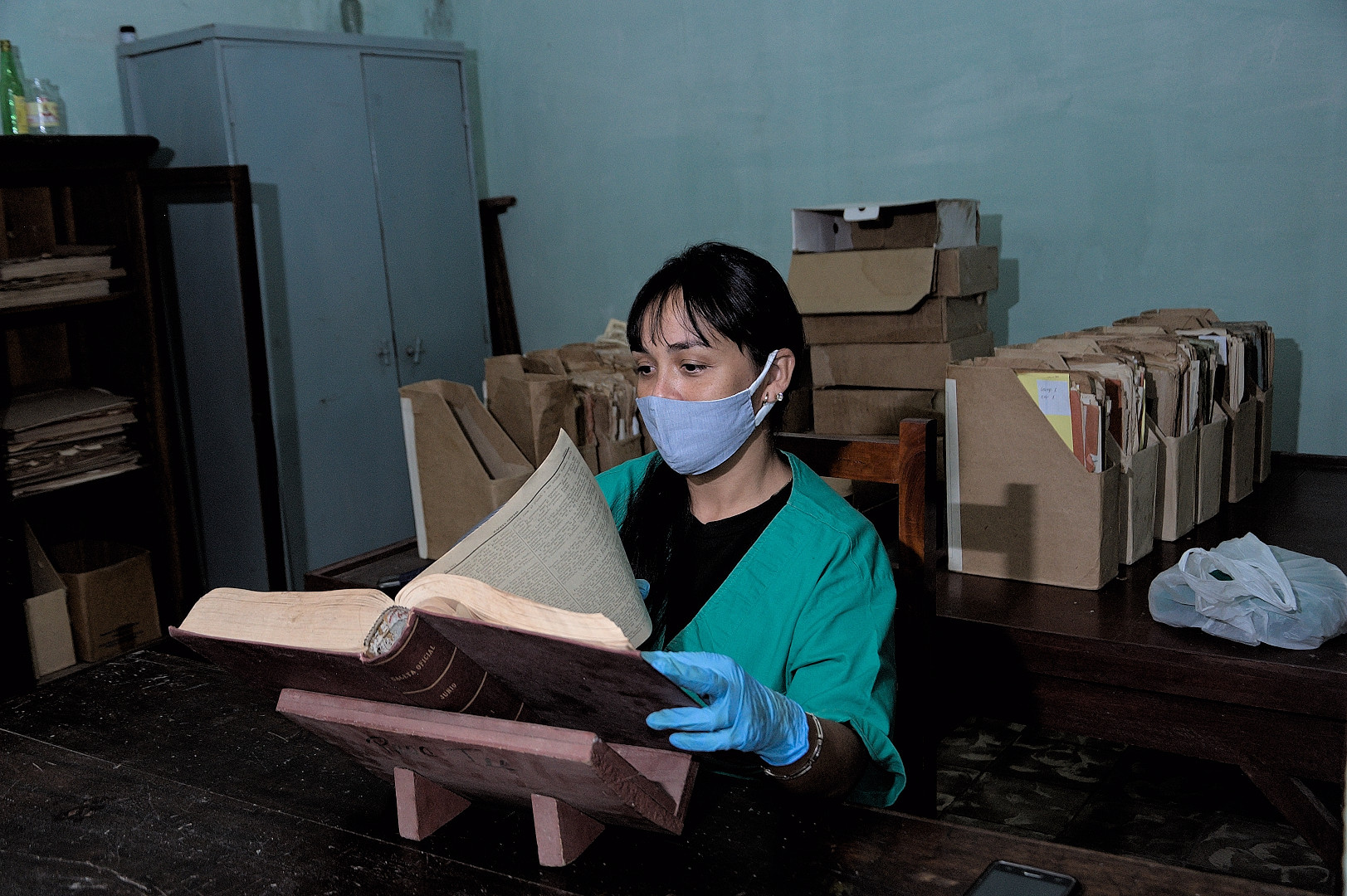
"It is not only necessary to preserve the historical memory of Cuba, but also to make it visible to the population, in more attractive and interactive ways"
The President of the Republic, Miguel Díaz-Canel Bermúdez, recently gave guidance when checking the Historical Memory Program. This issue is a permanent part of the Government's work agenda in the country, an unequivocal sign of its priority. The obsolescence of technologies, the lack of resources to digitize and the poor constructive state of the buildings, together with the ignorance about the importance of archival and preservation work among some managers of various institutions, are common problems in almost all of the territories of the country, according to what has happened in those meetings.
Translated by Linet Acuña Quilez



